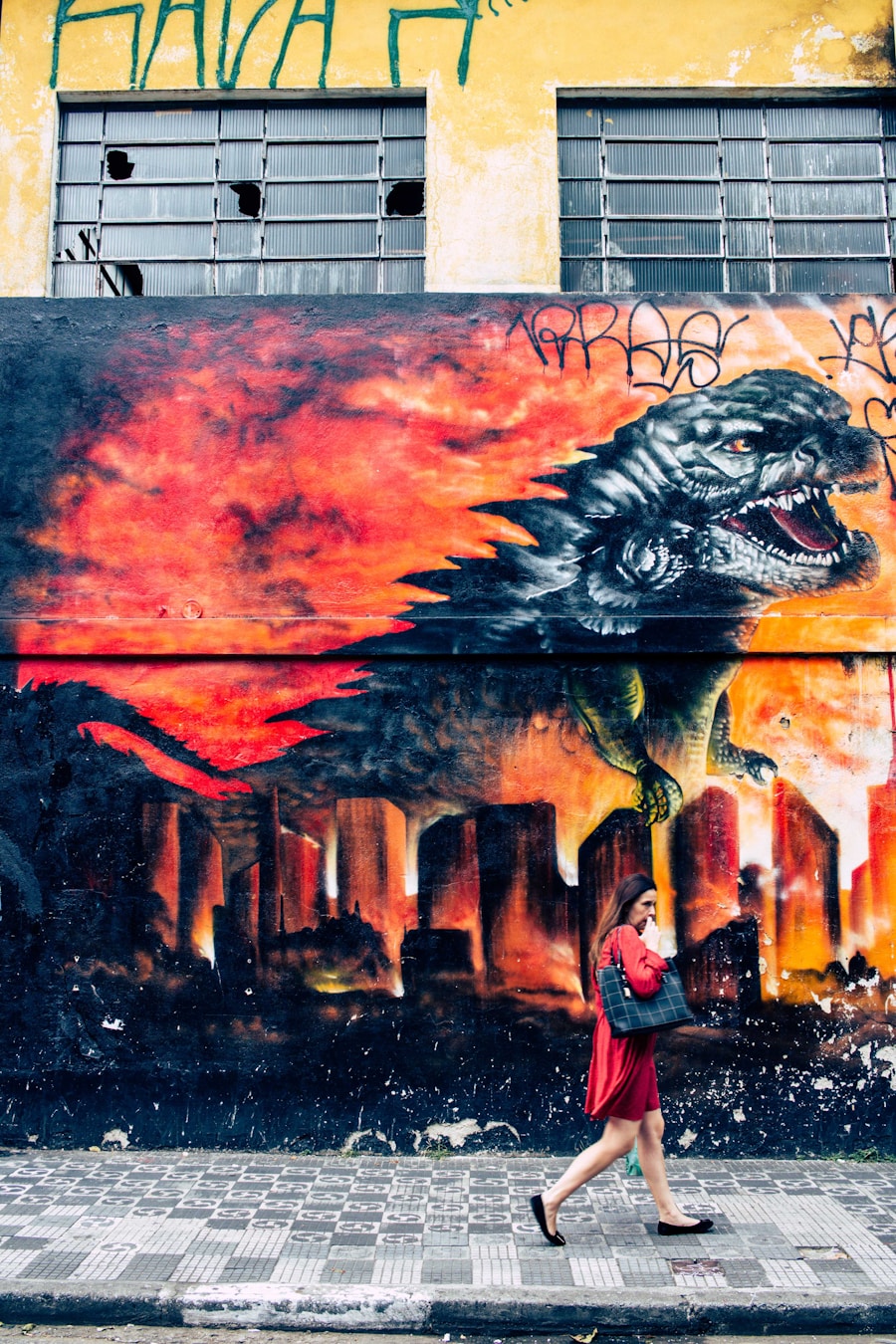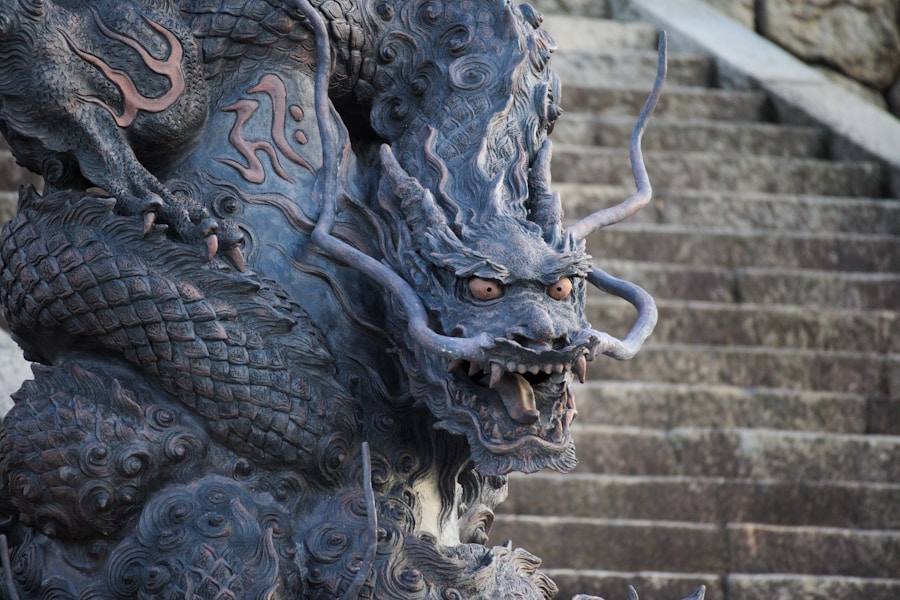Godzilla, the iconic creature that has roamed the silver screen since 1954, stands as a towering figure in the realm of monster cinema. Often referred to as the “King of the Monsters,” Godzilla embodies a complex blend of terror and fascination, representing humanity’s fears and aspirations. This colossal beast, with its unmistakable roar and formidable presence, has become a symbol of resilience and destruction, reflecting the duality of nature itself.
As you delve into the world of Godzilla, you will discover not just a monster, but a cultural phenomenon that has transcended generations and geographical boundaries. The origins of Godzilla are steeped in historical context, emerging from the ashes of post-war Japan. Created by Toho Studios, this creature was born out of the anxieties surrounding nuclear power and its devastating consequences.
As you explore Godzilla’s journey through time, you will see how this character has evolved from a harbinger of doom to a misunderstood anti-hero, capturing the hearts of audiences worldwide.
Summary
- Godzilla, the King of the Monsters, is a legendary creature in popular culture known for its immense size and destructive power.
- Godzilla has evolved from a symbol of nuclear destruction to a beloved pop culture icon, appearing in numerous films, TV shows, and merchandise.
- Godzilla has faced off against a variety of rival monsters, including King Ghidorah, Mothra, and Mechagodzilla, in epic battles for supremacy.
- Godzilla’s impact on global pop culture is undeniable, with the creature’s image and influence reaching far and wide across the world.
- The future of Godzilla looks bright, with new films and franchise expansions in the works, ensuring the creature’s continued relevance in popular culture.
The Evolution of Godzilla in Popular Culture
Over the decades, Godzilla has undergone significant transformations, adapting to the changing landscape of popular culture. Initially portrayed as a terrifying force of nature, Godzilla’s character began to shift in the 1960s and 1970s. You may notice that during this period, the films took on a more campy tone, introducing a variety of other monsters and even showcasing Godzilla as a protector of humanity.
This evolution reflects not only shifts in societal attitudes but also the desire for escapism during turbulent times. As you examine Godzilla’s evolution further, you will find that each film iteration has contributed to a rich tapestry of storytelling. From the serious undertones of the original films to the more light-hearted adventures in later series, Godzilla has managed to remain relevant by mirroring contemporary issues.
The introduction of new characters and storylines has allowed for a diverse exploration of themes such as environmentalism, corporate greed, and even friendship. This adaptability is a testament to Godzilla’s enduring appeal and its ability to resonate with audiences across different eras.
Competing Monsters: Godzilla’s Rivals for the Throne

In the vast universe of kaiju films, Godzilla is not without rivals. Throughout its history, you will find that various monsters have emerged to challenge Godzilla’s supremacy. Iconic adversaries such as King Ghidorah, Mothra, and Mechagodzilla have not only provided thrilling battles but have also enriched the narrative landscape surrounding Godzilla.
Each rival brings unique characteristics and motivations, creating a dynamic interplay that keeps audiences engaged. The rivalry between Godzilla and these formidable foes often serves as a reflection of societal fears and challenges. For instance, King Ghidorah, with its three heads and destructive capabilities, can be seen as a representation of overwhelming threats that humanity faces.
As you explore these rivalries, you will appreciate how they contribute to Godzilla’s status as the King of the Monsters. The battles are not merely physical confrontations; they are symbolic struggles that resonate with deeper themes of conflict and resolution.
Godzilla’s Impact on Global Pop Culture
| Metrics | Data |
|---|---|
| Number of Godzilla films released | 36 |
| Box office revenue of Godzilla films | Over 1.6 billion |
| Number of Godzilla video games | Over 30 |
| Number of Godzilla comic books | Over 200 |
| Number of Godzilla TV series | 3 |
| Number of Godzilla theme park attractions | 2 |
Godzilla’s influence extends far beyond Japan; it has made an indelible mark on global pop culture. As you navigate through various media forms—films, television shows, comic books, and video games—you will see how Godzilla has become a cultural touchstone for fans around the world. The creature’s iconic status is evident in countless references across different genres, from parodies in animated series to serious homages in dramatic films.
Moreover, Godzilla has inspired an entire genre of monster movies known as kaiju films. This genre has seen a resurgence in popularity in recent years, with new filmmakers drawing inspiration from Godzilla’s legacy. You may find it fascinating how this creature has paved the way for other monsters to emerge, creating a rich ecosystem of cinematic storytelling that celebrates both fear and wonder.
The global reach of Godzilla is a testament to its universal themes and its ability to connect with audiences on an emotional level.
The Future of Godzilla: New Films and Franchise Expansion
As you look ahead to the future of Godzilla, it is clear that the franchise is poised for continued growth and evolution. Recent films have reinvigorated interest in this legendary monster, with “Godzilla: King of the Monsters” and “Godzilla vs. Kong” showcasing spectacular visuals and engaging narratives.
These films not only pay homage to Godzilla’s storied past but also introduce new audiences to its grandeur. The expansion of the franchise is not limited to films alone; television series and merchandise are also on the rise. You may be intrigued by upcoming projects that promise to delve deeper into Godzilla’s lore and explore new dimensions of its character.
As filmmakers continue to innovate and experiment with storytelling techniques, there is no doubt that Godzilla will remain at the forefront of monster cinema for years to come.
Godzilla’s Influence on Other Monster Movies

Godzilla’s impact on other monster movies cannot be overstated. As you explore various films within the genre, you will notice that many have drawn inspiration from Godzilla’s design, themes, and narrative structure. The creature’s ability to evoke both fear and empathy has set a benchmark for how monsters are portrayed on screen.
You may find it interesting how filmmakers have sought to replicate or subvert these tropes in their own works. From Hollywood blockbusters to independent films, Godzilla’s influence is evident in the way monsters are conceptualised and brought to life. Movies like “Pacific Rim” and “Cloverfield” showcase giant creatures in ways that echo Godzilla’s legacy while also pushing boundaries in visual effects and storytelling.
As you watch these films, consider how they pay tribute to Godzilla while carving out their own identities within the monster movie landscape.
Godzilla’s Cultural Significance and Legacy
Godzilla is more than just a monster; it is a cultural icon that embodies complex themes relevant to society at large. As you reflect on its significance, you will see how Godzilla serves as a metaphor for humanity’s relationship with nature and technology. The creature’s destructive power often mirrors our own capacity for self-destruction through environmental neglect or warfare.
The legacy of Godzilla extends beyond entertainment; it invites critical discourse on pressing issues such as climate change and nuclear proliferation. You may find it compelling how this fictional monster has sparked conversations about real-world challenges, encouraging audiences to reflect on their own actions and responsibilities. In this way, Godzilla transcends its role as mere entertainment; it becomes a catalyst for social awareness and change.
Is Godzilla Still the Reigning King of the Monsters?
As you contemplate whether Godzilla remains the reigning King of the Monsters, it becomes evident that this iconic figure continues to hold a unique place in popular culture. Its ability to adapt and evolve ensures that it remains relevant in an ever-changing landscape. With new films on the horizon and an expanding franchise, Godzilla is poised to captivate future generations just as it has captivated yours.
Ultimately, Godzilla’s enduring legacy lies in its capacity to resonate with audiences on multiple levels—entertaining while provoking thought about humanity’s place in the world. As you reflect on this remarkable creature’s journey from its origins to its current status, you may find yourself appreciating not just its monstrous form but also its profound cultural significance. Indeed, as long as there are stories to tell about fear, resilience, and hope, Godzilla will undoubtedly reign supreme as the King of the Monsters.
In a recent article from Kaiju News, the debate over whether Godzilla is still the king of the monsters rages on. The article compares Godzilla’s power to that of King Ghidorah, another formidable kaiju in the monster universe. It delves into their strengths and weaknesses, ultimately leaving readers to ponder who truly reigns supreme in the world of giant monsters. This thought-provoking piece adds another layer to the ongoing discussion of Godzilla’s dominance in the monster world.
FAQs
What is the origin of Godzilla?
Godzilla, also known as Gojira, is a fictional giant monster originating from Japanese cinema. The character first appeared in the 1954 film “Godzilla” produced by Toho Company Ltd.
Is Godzilla still considered the King of the Monsters?
Yes, Godzilla is still widely regarded as the King of the Monsters in popular culture and within the context of the fictional universe in which the character exists.
How many Godzilla films have been made?
As of 2021, there have been 36 films produced by Toho featuring Godzilla. Additionally, there have been several American-produced Godzilla films.
What are some of Godzilla’s most notable abilities?
Godzilla is known for its immense size, strength, and durability. It also possesses atomic breath, which it can use as a powerful weapon.
Has Godzilla appeared in other forms of media?
Yes, Godzilla has appeared in various forms of media, including television shows, video games, comic books, and novels.
Is Godzilla a hero or a villain?
Godzilla’s portrayal has varied over the years, with some films depicting it as a destructive force and others portraying it as a defender of humanity. In recent years, Godzilla has been more commonly depicted as a heroic figure.
